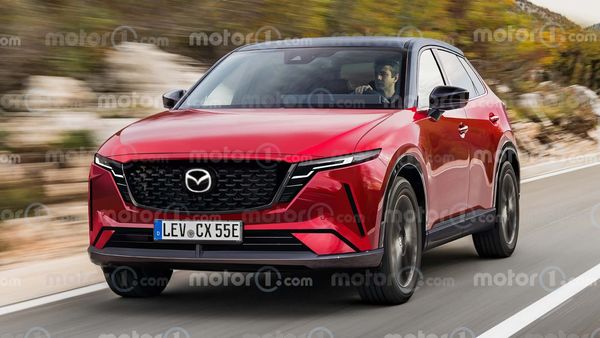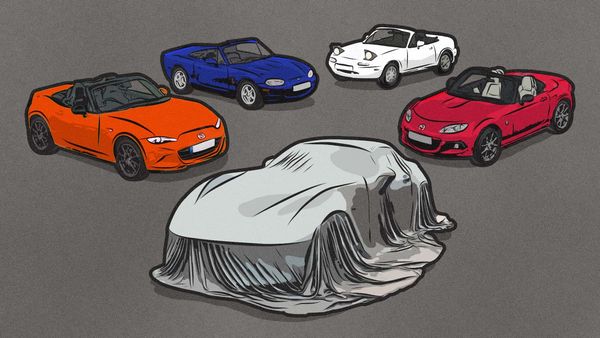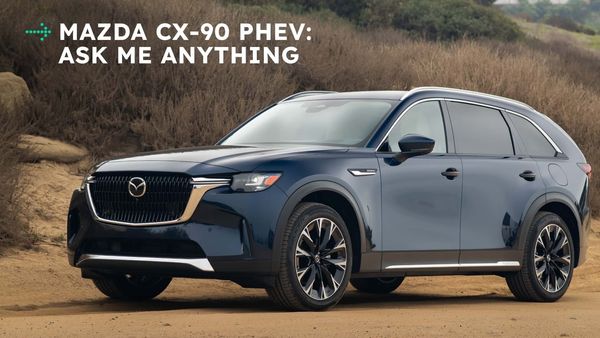
Ahead of last year's NASCAR’s season finale in Phoenix, my friend and fellow car nerd, Bozi Tatarevic, asked Mazda to borrow a CX-90. I borrowed another Mazda for the weekend, the CX-70, which is the CX-90’s nearly identical stablemate. (Bozi wanted to see how the engineering of these cars differed. I just thought it would be funny to be twins.) As we walked into the parking lot with the pair of Mazdas, I saw them next to each other for the first time.
It was uncanny. From the outside, they looked exactly the same.
| Quick Specs | 2025 Mazda CX-70 Turbo S Premium Plus |
| Engine | Turbocharged 3.3-Liter Inline-Six Mild-Hybrid |
| Output | 340 Horsepower / 369 Pound-Feet |
| 0-60 MPH | 6.0 Seconds (est.) |
| Weight | 4,863 Pounds |
| Price / As Tested | $41,900 / $57,775 |
The CX-70 is one of five Mazda SUVs on the American market for 2025, and it also has the highest starting price—$41,900. The CX-70 comes in several forms, including a mild-hybrid option with anywhere from 280 to 340 horsepower, and a plug-in hybrid with 323 horsepower.
I drove the Turbo S Premium Plus trim, complete with a turbocharged 3.3-liter mild-hybrid inline-six mild-hybrid making 340 hp, paired to an eight-speed automatic transmission. The car starts at $57,325 with destination fees, and my loaner only had one option: $450 Polymetal Gray Metallic paint. I prefer vibrant colors, especially Mazda’s Melting Copper Metallic (rose gold) and the famous Soul Red Crystal. But if gray is your thing, Polymetal has a nice bluish glow.

I’ve driven the CX-90 before, but this was my first time in the CX-70. In alphanumeric car names, letters typically stand for something (like how Mazda’s "CX" means “crossover”), and numbers denote the size. The bigger the number, the bigger the vehicle, and the higher the price. Usually.
These two are a departure from that rule. They have the same dimensions and the same body, apart from a few styling tweaks. But the CX-70 has two rows (seating five), and the CX-90 has three (seating up to eight). Yet, the CX-90 is cheaper; it only costs $39,300 by comparison.
Before hopping into the CX-70, I knew there would be one big snag: People think it’s just a less logical CX-90, and their buying decisions reflect that. For every one CX-70 Mazda sold in America in December, the company sold four CX-90s. Although, to be fair to the CX-70, it hasn’t been on sale for nearly as long.

Pros: Excellent Interior Styling, Sublime Ride Quality, Abundant Driver-Assistance Features
The CX-70, like all Mazda SUVs, has a tame but classy exterior. Mazda’s design language hasn’t evolved much since the mid- to late-2010s, meaning the current CX-70 looks a lot like the former CX-9. But it still looks nice, and it may age better due to the previous design’s longevity (think: 2000s and 2010s Toyota trucks).
The only nitpick I have is with the rear proportions. There’s a bulge on the upper half of the hatch, and both the CX-70 and CX-90 would look more elegant with that smoothed out.



Inside, the CX-70 has comfortable seats, strong seat heaters, and well-styled upholstery. My car had a caramel-colored interior loaded with soft leathers, suede, and wood-style trim. The materials and patterns looked different but complementary enough to keep my eyes moving around the cabin, and the only letdown was a plasticky gear selector, which felt like a toy.
Mazda pairs its infotainment system with buttons and dials, which is often a good thing—people like physical touch while they’re driving. Infotainment haptics can be the difference between opening Spotify or calling someone you absolutely do not mean to call.
The only catch is that when the CX-70 is stopped, the touchscreen works. When it’s moving, you’re relegated to buttons and dials. Until you get accustomed to that rule, you just poke the screen and wonder why it won’t work. (If you want to get around this when using Apple CarPlay, there's a setting called "touchscreen in motion.")

Cons: Non-Intuitive Controls, Competition With the CX-90
Still, the CX-70 feels and drives like a more expensive car. There’s barely any road or wind noise at highway speeds, and the suspension softly absorbs bumps and impacts (even if you end up on a divot-filled gravel road, like I did while looking for a place to shoot photos). The gas and brake pedals are responsive—they don’t just softly sink to the floor—and the car isn’t fast, but it’s quick enough for commutes and highway merging.
But the best part of driving the CX-70 is the driver-assistance features. The lane-keeping assist is smooth, easily tracking lane lines and centering the car between them through twists and turns. Most modern cars turn lane-keep off in areas without clear lane markers—like intersections or faded old roads—but not all of them give the driver an obvious signal that the feature is turning off. The lane-keep icon beeps and changes colors, but remains consistent. I never worried about it turning off randomly.
Adaptive cruise control is just as smooth in traffic. It’ll effortlessly accelerate and decelerate without jarring motions, aside from the occasional late braking when the car needs to hit a full stop. A few times, I stepped in and braked earlier so I didn’t get too close to the car in front of me. The CX-70 would’ve done just fine, but I wanted a bigger gap.


I only had two points of frustration while driving the CX-70, and both were minor.
The first came with the driver-assistance controls. If the car turned off a driver-assistance feature and hadn’t turned it back on yet, I’d hit that feature’s button and end up turning all the features off. Then I’d have to hit it again to turn them on. It felt like the driver had to use lane-keep and adaptive cruise as a package deal, but the car could decide to turn one on or the other off.
The second hiccup was with the parking cameras. They worked perfectly while parking or reversing, providing an omniscient awareness of my surroundings. But the camera feeds also lingered on the infotainment screen too long. I’d leave a parking lot, look at my infotainment screen to see which way the navigation wanted me to go, and see parking cameras instead. It was only a few seconds, but it made me feel lost.

I don’t have a one-size-fits-all solution to the CX-70 vs CX-90 debate, and neither do other reviewers. The answer comes down to preferences and budget; both the Mazda CX-70 and CX-90 feel and drive like more expensive vehicles than they are, and if a buyer descends from the $70,000 price bracket to buy one, they might not care that the CX-70 is a similar package with fewer seats. They might just take the rear cargo space and call it a day.
But for the more budget-conscious, the CX-90 feels like the choice. Even if potential buyers would only use the third row a few times, they won’t want to think they spent more on a CX-70 and forfeited the ability to do that. They’ll want to think they made the most scalable and reasonable decision with their money, and that’s OK.
The CX-70 is a great car, and the CX-90 is equally as great—just with more seats to go around.
Competitors
2025 Mazda CX-70 Turbo S Premium Plus










